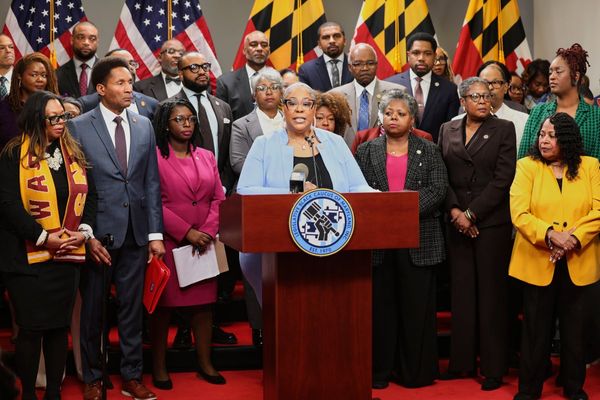
Having spent much of my working life with winemakers who never had to leave home to find their dream job, I’ve sometimes wondered what it might be like to have been born and raised in a great wine region. Would it have stripped away the romantic lens through which British wine lovers like me tend to view places such as Burgundy or Barossa? Or would I now be filled with the same easy pride that Burgundians and Barossans, even those who don’t work in the wine business, feel about their local product?
Probably the latter, given recent developments in the part of Essex where I grew up. Praise for the latest wine produced within a 10-mile radius of where I was born always provides a little flutter of positivity and recognition, not unlike coming across my small town on TV as a kid (“Look, we’re on Lovejoy!”) . Over the past decade place names from bus routes of my childhood have been infused with a sense of glamour. Danbury, Althorne, Latchingdon, Purleigh are all home to vineyards, and wines, that have helped set the new mood in English wine.
This will be a familiar feeling across southern England especially in Kent, Sussex, Surrey, Hampshire and Dorset. Much of the 21st-century vine-planting boom has happened in these counties, with the total amount of land in England and Wales given over to vineyards quadrupling in size since 2000 and now amounting to 3,800 hectares. Has the sentimental attachment some of us feel to the names now appearing on wine labels dulled our critical faculties? Possibly, although the number of critics inclined to give English wines a local pride-inspired easy ride is still outweighed by those who are overly stern with an industry considered an eccentric hobby until the 1990s.
A more balanced view would find plenty of reasons for optimism without ignoring the occasional dark cloud. Top of the plus side of the ledger is obviously the outstanding quality of the best of the traditional method sparkling wine producers (Nyetimber, Gusbourne, Balfour, Camel Valley, Wiston Estate, Sugrue, Hattingley Valley, Hambledon, Bride Valley, Rathfinny, Breaky Bottom, Coates & Seely, Exton Park).
The vastly improved quality of still wines is equally exciting. They account for around a third of production each year, notably from the same grapes used for sparkling (chardonnay, pinot noir) but also the fragrant English answer to sauvignon blanc, bacchus. (Bolney, Camel Valley, Danbury Ridge, New Hall, Gusbourne, Balfour, Simpsons Estate, Blackbook and Stopham Estate are behind some recent favourites.)
The minuses begin with the somewhat hit-and-miss nature of the still wines made outside the top tier, especially in difficult vintages such as 2021. Then there are the relatively high prices across the board. Although understandable given the context of southern England’s high land, labour and equipment costs, as well as the relatively small scale of its producers, it means English wines don’t always stack up against competitors from northern Europe and New Zealand.
The better sparkling producers are also a little worried by the recent rise of cheaper, more easily mass-produced wines modelled on prosecco rather than champagne: will they drag down England’s hard-won reputation for world-class fizz?
Not everything is rosy in the garden of English wine but that’s true of any wine region. And the fact is it’s never been easier for an English wine lover to be a lover of English wine.
Six of the best English wines

Lark Song English Rosé by Balfour
Kent, England 2021 (£12, Marks & Spencer)
One of England’s most consistent producers of sparkling wine (including some of the best supermarket own-labels), Balfour is also a reliable name in still wine, making some stunning single-vineyard pinot noir and chardonnay. They also make this winning, red-apple crunchy, refreshing rosé.
New Hall Vineyards Purlai Gold
Essex, England 2017 (£17.50, newhallwines.com)
A genuine English wine pioneer, New Hall, in the Crouch Valley south of Maldon in Essex, now has more than 50 vintages under its belt. Quality has never been better, as this delightful honeyed, sunbeam-bright take on a Loire sweet wine, made from bacchus and schonburg, shows.
Dillion’s Vineyard Bacchus
Sussex, England 2020 (£18, dillionsvineyard.co.uk)
You don’t tend to find the bacchus grape much outside of the UK, but the fragrant dry whites it makes in southern England have a similar appeal to Loire sauvignon. This pristine example is a spring-into-summer-scented delight, all citrus and gooseberry verve and elderflower charm.
Black Book Winery Painter of Light Clayhill Vineyard Chardonnay
Essex, England 2020 (from £27.99, novelwines.co.uk; blackbookwinery.com)
The best English sparkling wine has long been able to compete with the best of the region that inspired it: Champagne. Now the best English still chardonnays are offering quality as good as white burgundy. Made by an American in Battersea from fruit sourced in Essex, this is complex, resonant, full of life.
Gusbourne Estate Pinot Meunier
Kent, England 2020 (£29, gusbourne.com)
Of the trio of grape varieties used to make champagne-style fizz, pinot meunier is the least likely to turn up as a still wine. The delightfully crunchy, sappy, vivid, berries-and-currants of this bottling from top Kentish sparkling producer Gusbourne suggests it deserves to be used more often.
Busi-Jacobsohn Cuvée Brut
Sussex, England 2018 (from £38, yapp.co.uk; thesourcingtable.com; harveynichols.com; busijacobsohn.com)
From a relatively new name on the flourishing English sparkling wine scene, Busi-Jacobsohn’s chardonnay-dominated traditional-method Brut from East Sussex stands out for its restrained elegance: pulsing with life and energy, chalky mineral notes and bright lemon posset creaminess.







